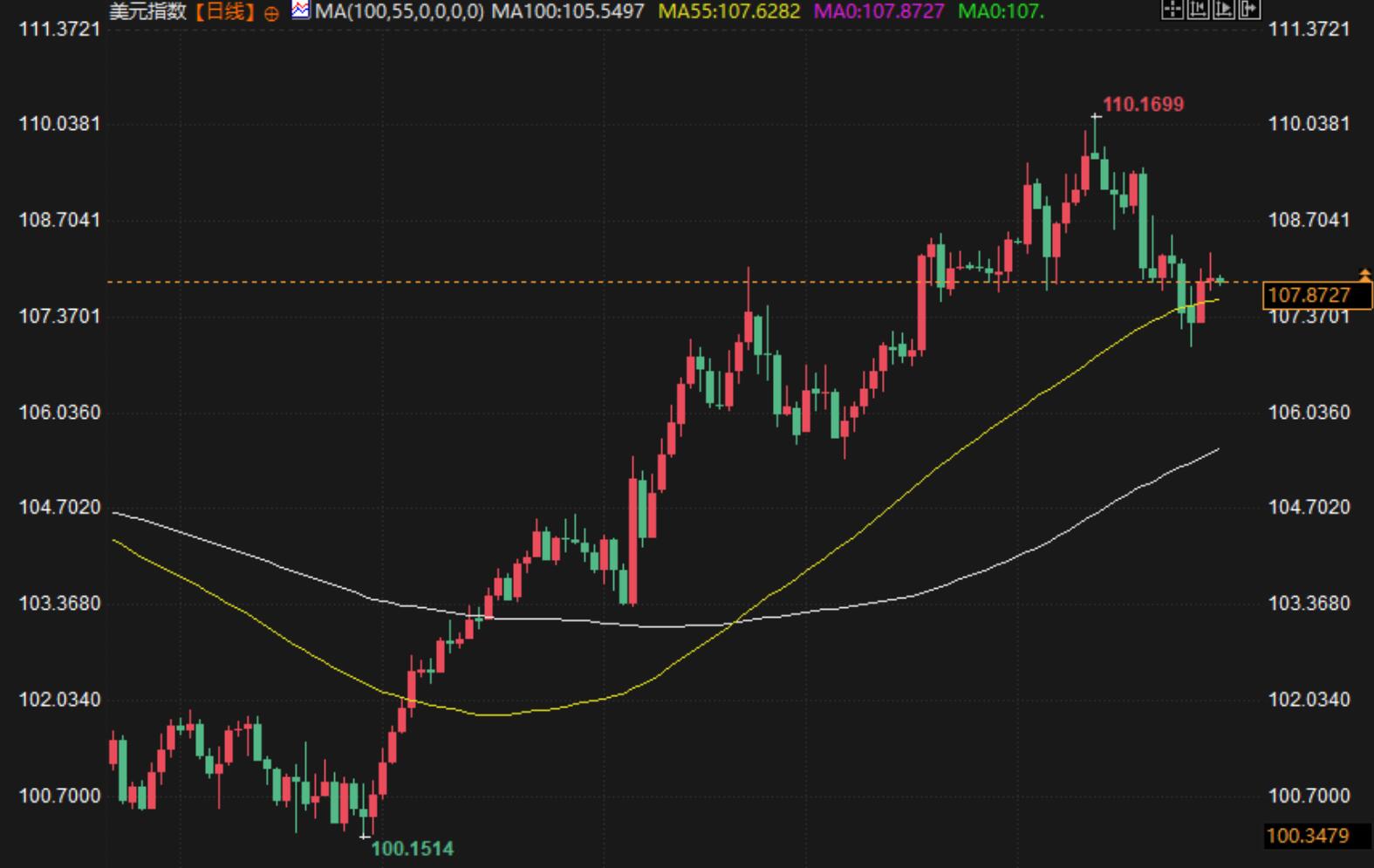The US dollar index is fluctuating amidst risk sentiment, with a focus on GDP data guidance
On Thursday (January 30th), the US dollar index traded at 107.8687, down 0.08% for the day. Despite a rebound in risk aversion sentiment, the overall trend of the US dollar remains weak, with market focus shifting towards the upcoming release of the US fourth quarter GDP data and the policy direction of the Federal Reserve. Currently, the US dollar index is still below its mid January high of 110.18, indicating a lack of upward momentum on a technical level, and may continue to fluctuate in the short term
The interweaving of US economic data and Federal Reserve policies affects the trend of the US dollar
This Thursday, the Bureau of Economic Analysis (BEA) in the United States will release preliminary GDP estimates for the fourth quarter of 2024. The market generally expects an annualized growth rate of 2.8% for the US economy, slightly lower than the 3.1% in the third quarter. Although the growth rate has slowed down, this data still indicates that the US economy is maintaining healthy growth. At the same time, the GDP report will also include the latest data on the Personal Consumption Expenditures (PCE) price index, which is a key indicator for the Federal Reserve to measure inflation. The market expects the core PCE price index to rise to 2.5% in the fourth quarter, higher than the 2.2% in the third quarter, indicating that inflationary pressure still exists.
In addition, the GDP price index is expected to increase by 2.5%, higher than the 1.9% in the third quarter. This index reflects changes in the prices of domestically produced goods and services, providing a clear perspective on the impact of inflation on GDP. It is worth noting that the latest forecast from the Atlanta Fed's GDPNow model shows a real GDP growth rate of 3.2% in the fourth quarter, higher than the 3.0% on January 17th. This upward adjustment further strengthens the market's confidence in the resilience of the US economy.
However, the Federal Reserve had already announced that interest rates would remain unchanged before the release of GDP and PCE data, and the market is still digesting the impact of this decision. In December last year, the Federal Reserve released its Summary of Economic Forecasts (SEP), which showed that the expected economic growth by the end of 2025 had been raised from 2% to 2.1%, and the expected core inflation had been raised from 2.1% to 2.5%. This indicates that Federal Reserve officials expect the economy to continue expanding and inflation to remain above the 2% target in the short term.
Technical aspect of the US dollar: significant upward resistance, limited downward space
From a technical perspective, the US dollar index shows some stability above 108.00, but the upward potential is limited. Renowned institutional analysts pointed out that the intraday high of 108.50 on January 23 is a short-term resistance level, and if it breaks through this level, the market may further test the 109.00-109.50 area. However, the Relative Strength Index (RSI) is still below 50, indicating limited bullish power, while the red bar chart of MACD shows that selling pressure still exists.
On the other hand, if the US dollar index falls below the intraday low of 107.75 on January 29th, it may further explore the January low of 106.97. However, with the support of risk aversion sentiment, the possibility of a significant short-term decline in the US dollar is low, and any pullback may be seen as a buying opportunity.

Federal Reserve Policy and Market Expectations
Federal Reserve Chairman Powell reiterated at a recent press conference that monetary policy remains restrictive, but deleted language about the progress of inflation. This change has been interpreted by the market as a easing of the Federal Reserve's concerns about inflation, although Powell emphasized that policy will still rely on data. The market's expectation for a March interest rate cut has significantly decreased, and there are now more bets that the timing of the rate cut may be postponed. At the same time, the yield of US treasury bond bonds remained firm, and the 10-year yield was close to 4.10%, providing some support for the US dollar.
Powell also mentioned that GDP growth is expected to exceed 2% in 2024, the labor market remains strong, the unemployment rate is at a historical low, and job vacancies remain stable. Although he avoids directly commenting on trade policies, he emphasizes that the Federal Reserve will adjust policies based on economic conditions. This statement indicates that the Federal Reserve may maintain a cautious stance in the short term, and the market will closely monitor key data such as Friday's non farm payroll report.
Future outlook: GDP data may become a key catalyst
Overall, the US dollar index may continue to fluctuate within the range of 107.50-108.50 in the short term. If the GDP data is better than expected, it may strengthen the dovish stance of the Federal Reserve and put pressure on the US dollar; On the contrary, if the data falls short of expectations, the US dollar may receive support. In addition, Trump's tariff rhetoric and global economic uncertainty may also affect market sentiment, further exacerbating the volatility of the US dollar.
Under the dual influence of risk aversion and Federal Reserve policy expectations, the US dollar index lacks a clear direction in the short term. Investors need to closely monitor the upcoming GDP data and its potential impact on market sentiment, while being alert to changes in key technical support and resistance levels.
Tips:This page came from Internet, which is not standing for FXCUE opinions of this website.
Statement:Contact us if the content violates the law or your rights
